Contact Details

In conventional lathe-type machine tools, the capability of feed motion in the XZ plane is an inherent limitation. In a parting operation, this inevitably directs the resultant vector of cutting forces sharply across the cross-section of the tool, resulting in high loads and susceptibility to deformation. The classical parting blade design compensates for this with a large height relative to the width.
Sandvik Coromant engineers now have a remedy that utilizes the modern machines’ capability to feed the tool in the Y direction. The new concept places the top face of the insert parallel to the end of the blade, as if rotating the insert seat 90° counterclockwise. The new blade cuts its way into the workpiece with essentially its front end, which roughly aligns the resultant vector of cutting forces with the longitudinal axis of the blade. FEM analysis confirms that this eliminates critical stresses typical to conventional blades and increases the blade stiffness by six times compared with standard designs. Put another way, the extent of deformations was as low as one-sixth of the deformations generated in standard blades.
In terms of application, the new Y-axis parting method is astonishingly simple. Similarly to conventional blades, the cutting edge is positioned as close to the center line of the workpiece as possible. This is accomplished automatically as a side product of the tool length measurement, which the new tool requires for each setup. This also verifies the correct center height.
Two machine tool types in particular benefit from the new concept: multitask machines and turning centers.
The domain of turning centers is mass production, typically from bar stock of 65 millimeters (approximately 2.6 inches) in diameter, where the biggest benefits of Y-axis parting are improved productivity and surface quality. The opportunities for quality optimization are interesting because parting off is typically the last stage for a component. Thus, any work stages after parting off are preferably eliminated. Machining economics can be further improved by reducing the parting width.
For multitask machines, Y-axis parting blades primarily offer increased accessibility and capability for larger diameters. A pretest confirmed a 50 percent increase in the overhang when parting off a conventional 120-millimeter (approx. 4.7 inches) diameter bar at the maximum feed capacity of the insert. A 300 percent productivity increase was achieved with no process security complications. In a customer test case, Y-axis parting successfully replaced band sawing for a 180-millimeter (approx. 7.1 inches) diameter Inconel bar, resulting in significant productivity improvement due to dramatically shorter machining times.
Y-axis parting requires minimal changes in a typical production setting. The increased maximum cutting diameter of 180 millimeters (approx. 7.1 inches) can obviously alter setups, but in other respects, very little needs to be changed. The CoroCut QD blades come in standard widths of 3 and 4 millimeters, fit in regular holders and use standard inserts. The changes are mainly in presetting, programming and slightly different measurements due to compensation in the Y direction.
The Sandvik Coromant Production unit in Renningen, Germany, is using Y-axis parting in production of CoroChuck 930 and other basic holders. Expectations have been exceeded in all diameters and materials, and the new solution is being escalated into all applicable machines and bar diameters up to 102 millimeters (approx. 4 inches).
“With the rapid sales increase of CoroChuck 930, we really need to ramp up our production,” says Mattias Brandt, team leader CNC programming. Adds CNC programmer Stefan Frick, “We have been able to cut our cycle times by up to 15 seconds only by changing the parting-off cycle to utilize the Y-axis, and at the same time we also get a much more robust process.”
Machine: DMG GMX400
Material: Alloy steel X40 and 16Mn
Component: CoroChuck 930
Cutting data: vc 120 m/min (394 ft/min), fn 0.35 mm/rev (.014 in/rev)
Results: Machining time reduction of five to 15 seconds/part, thanks to substantially higher feed rate, increased from 0.10 mm/rev (.004 in/rev) to 0.35 mm/rev (.014 in/rev).
Related Glossary Terms
- bandsaw blade ( band)
bandsaw blade ( band)
Endless band, normally with serrated teeth, that serves as the cutting tool for cutoff or contour band machines.
- centers
centers
Cone-shaped pins that support a workpiece by one or two ends during machining. The centers fit into holes drilled in the workpiece ends. Centers that turn with the workpiece are called “live” centers; those that do not are called “dead” centers.
- computer numerical control ( CNC)
computer numerical control ( CNC)
Microprocessor-based controller dedicated to a machine tool that permits the creation or modification of parts. Programmed numerical control activates the machine’s servos and spindle drives and controls the various machining operations. See DNC, direct numerical control; NC, numerical control.
- feed
feed
Rate of change of position of the tool as a whole, relative to the workpiece while cutting.
- parallel
parallel
Strip or block of precision-ground stock used to elevate a workpiece, while keeping it parallel to the worktable, to prevent cutter/table contact.
- parting
parting
When used in lathe or screw-machine operations, this process separates a completed part from chuck-held or collet-fed stock by means of a very narrow, flat-end cutting, or parting, tool.
- sawing
sawing
Machining operation in which a powered machine, usually equipped with a blade having milled or ground teeth, is used to part material (cutoff) or give it a new shape (contour bandsawing, band machining). Four basic types of sawing operations are: hacksawing (power or manual operation in which the blade moves back and forth through the work, cutting on one of the strokes); cold or circular sawing (a rotating, circular, toothed blade parts the material much as a workshop table saw or radial-arm saw cuts wood); bandsawing (a flexible, toothed blade rides on wheels under tension and is guided through the work); and abrasive sawing (abrasive points attached to a fiber or metal backing part stock, could be considered a grinding operation).
- stiffness
stiffness
1. Ability of a material or part to resist elastic deflection. 2. The rate of stress with respect to strain; the greater the stress required to produce a given strain, the stiffer the material is said to be. See dynamic stiffness; static stiffness.
- turning
turning
Workpiece is held in a chuck, mounted on a face plate or secured between centers and rotated while a cutting tool, normally a single-point tool, is fed into it along its periphery or across its end or face. Takes the form of straight turning (cutting along the periphery of the workpiece); taper turning (creating a taper); step turning (turning different-size diameters on the same work); chamfering (beveling an edge or shoulder); facing (cutting on an end); turning threads (usually external but can be internal); roughing (high-volume metal removal); and finishing (final light cuts). Performed on lathes, turning centers, chucking machines, automatic screw machines and similar machines.

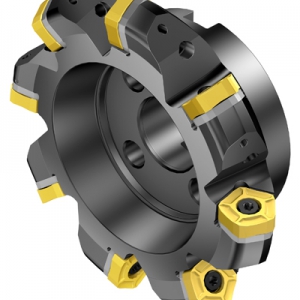
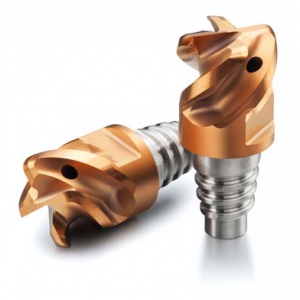
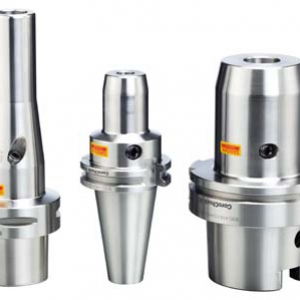
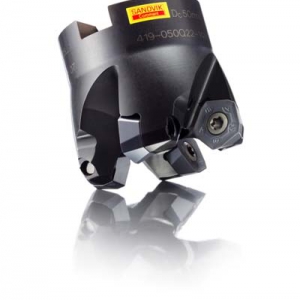
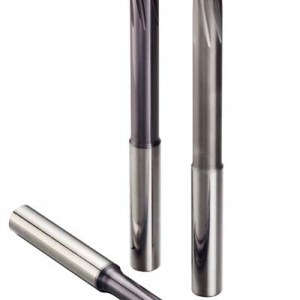
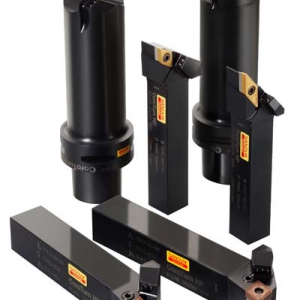
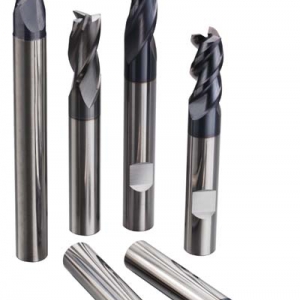
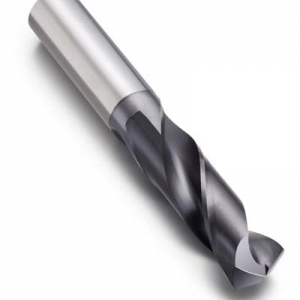

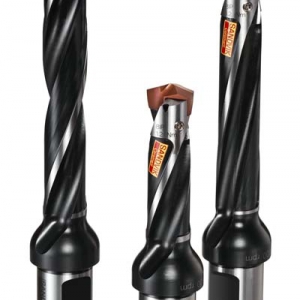
 PRODUCTS
PRODUCTS

